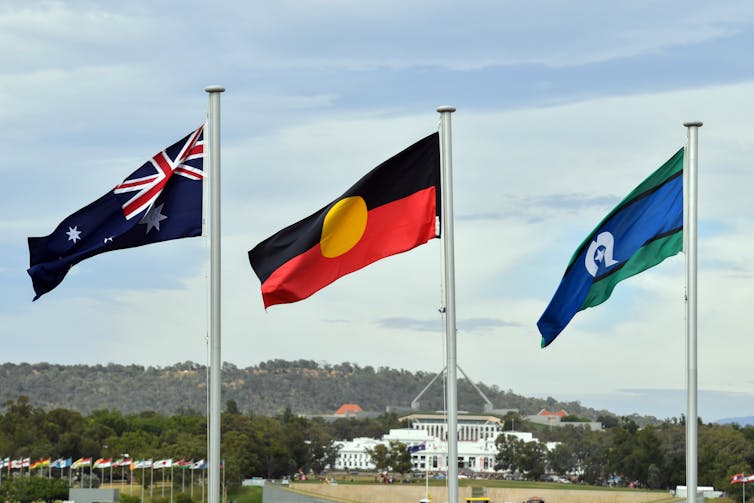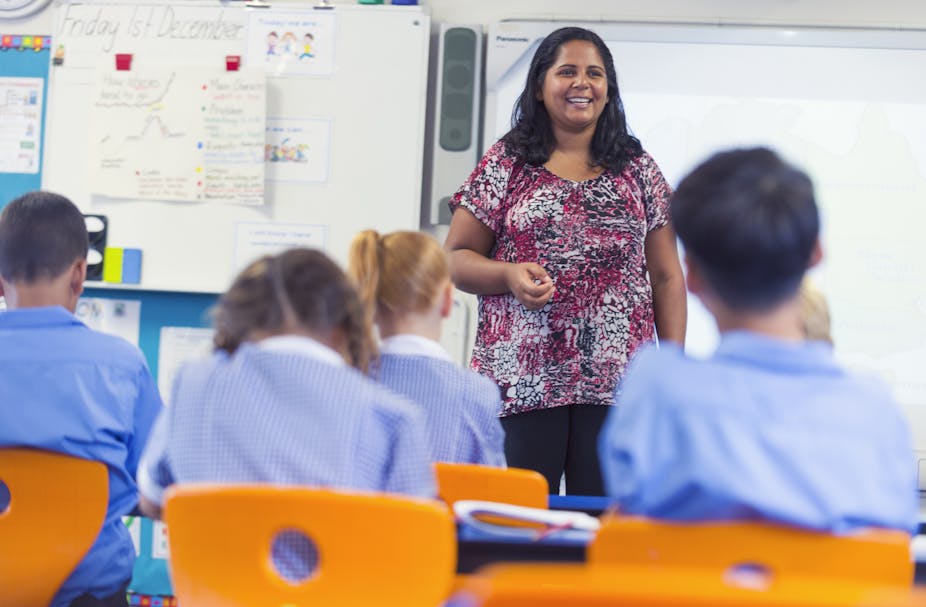The federal government has recently released a draft plan to fix the teacher shortage.
The plan sets out ways to increase respect for the profession and ease teachers’ workloads. A key aspect of the plan also includes recruiting more First Nations teachers. This emphasis is welcome. But as it stands, the draft doesn’t include enough detail about how we achieve this.
Read more: Jason Clare has a draft plan to fix the teacher shortage. What needs to stay and what should change?
We need more First Nations teachers
First Nations teachers are under-represented in Australian schools. As of 2016 6.2% of Australian school students identified as First Nations, while just 2% of the teaching workforce identified as First Nations.
We know First Nations cultures are the oldest continuous cultures in the world. We also know culture is not innate. We are born into culture, not with it.
So First Nations peoples have the oldest teaching and learning techniques and knowledges in the world. This has the potential to benefit all students. Recruiting and retaining First Nations teachers is crucial to this becoming a reality.
What’s in the plan?
The plan includes a number of specific measures designed to recruit more First Nations people into teaching degrees and classrooms. This includes:
A$10 million for a national campaign to increase respect for teachers, with a focus on First Nations teachers
bursaries of up to $40,000 to study teaching, again with a focus on First Nations students
a new national First Nations teachers’ strategy to apply from 2024. This will be co-designed by the federal government and First Nations education organisations
as part of this, $14.1 million for teaching First Nations languages in schools. This will give potential First Nations teachers exposure to the classroom and potentially provide a pathway for more First Nations teachers.
More detail needed
But so far, there is limited detail about how these actions or measures will lead to increasing teacher numbers. We welcome the investment in First Nations languages in schools, but there are many barriers to growing a First Nations teacher workforce.
According to the 2022 Closing the Gap report, 63% of Indigenous Australians aged 20 to 24 had finished year 12. This compares with 88.5% of non-Indigenous Australians in that age group.
Research has identified Indigenous students doing teaching degrees at university then face racism, a lack of financial support, inflexible structures of university, limited access to technology, and isolation.

When First Nations teachers enter the profession, they often face overwhelming demands. It is not uncommon for First Nations teachers to be seen by non-Indigenous colleagues as the expert in everything Indigenous in a school.
So, if we are going to get more First Nations people teaching in schools, we first need to ensure they were successful as a school student. Then we need to help them find a pathway through teacher education at university and then ensure it is worth staying in the profession, once they make it into classrooms.
Decolonising classrooms
Another element missing from the plan is an agenda to decolonise classrooms. This requires teachers and schools to change their approaches to include First Nations contexts across all aspects of teaching and learning.
This means everything from what is taught to the way it is taught and the spaces they are taught in. This means including knowledge of First Nations cultures in the curriculum, using First Nations ways of teaching, Aboriginal flags and artworks on display, dedicated collections in school libraries, and spaces that allow for on-Country learning. It also needs to involve Elders and other community members in our schools.
Without these changes, schools themselves become barriers to First Nations teachers wanting to remain in the profession.
Two pathways into the profession
Broadly speaking there are two pathways for First Nations people into teaching - through teaching assistant jobs or through university.
In many remote and rural schools, there is a strong workforce of First Nations teacher assistants. Programs to help Indigenous teaching assistants into teaching degrees have suffered from funding cuts, although the Northern Territory government, has recently announced it will increase professional development opportunities for remote Aboriginal teacher education. This includes school-based traineeships, grants and mentoring.
The federal government’s draft plan also touches on this – mentioning Queensland’s plan to build pathways for First Nations teacher assistants and classroom teachers, by talking to TAFEs and universities. There is also the commitment to a First Nations teachers’ strategy, and initiatives to build the cultural capabilities of the non-Indigenous teacher workforce.
This is a start, but it lacks detail and a sense of national cohesion.
And there is little detail about how First Nations school leavers – who mainly come from urban areas – can be encouraged to enter teaching degrees at university.
Bipartisanship is key
Lessons from past reviews highlight the merits of developing long-term, First Nations-led strategies and programs that provide real support for First Nations teachers.
They also note the importance of listening to, acting on and resourcing initiatives controlled by First Nations peoples. Consistency is vital for success. Bipartisanship is needed across education and Indigenous policy, so programs can be developed without the threat of funding being withdrawn if there is a change of government.
This is a crucial moment for Australia’s education system. The teacher shortage could lead to current and future generations missing out on the quality education they need.
We welcome the investment in First Nations teachers. But we also fear this won’t have the necessary impact unless there is system-wide reform and decolonisation that supports the recruitment, retention, and engagement of First Nations teachers – the oldest teachers in the world.

